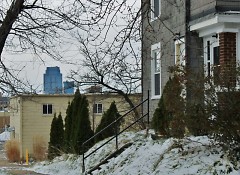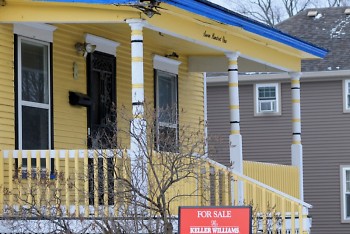The United States has a race issue. Rapidians who feel the racial tension is limited to Ferguson, Missouri need look no further than the recent Urban Institute report that named Grand Rapids the Most Racially Uneven Housing Market Recovery in the nation, beating out Detroit and three California markets.
They reported that between 2005 and 2013 loans made to African-Americans were down by 65.9% while loans to whites were only down by 21.4% in the city. This information, coupled with mapping, shows there were a significant portion of loans made in suburban GR and very few within the 49503 and 49507 districts, fueling the racial divide in the post-recession housing market.
Tight credit, foreclosed homes and lending regulations are all top level explanations for the uneven housing recovery in communities of color. The underlying issue is that Grand Rapids is still, to a large extent, segregated by race- which exaggerates the housing gap that still exists between whites and minorities.
Mayor Heartwell addressed this in November’s City Connection.
“Because nationally, and Grand Rapids is no different, there is a higher incidence of poverty among communities of color than among white communities. I would suggest that is itself evidence of racism in employment and hiring and perhaps education,” he said, referring to the issue of institutional racism.
History tells us that in the 1930s and 40s, the government attempted to assess housing risk for lenders by producing maps listing the grade of every urban neighborhood by Class. It was a rating system of A- E with “A” indicating Upper Class and “E” representing the Lowest Class which typically consisted of minority neighborhoods. Communities labeled “E” were outlined in red in a process known as “redlining.”
Housing gatekeepers used these maps when selling homes, not lending in the redlined neighborhoods. This lack of investment in the people and “Lowest Class” housing units contributed to low sales prices, high rental rates and substandard housing conditions. While redlining was eliminated as a practice in the 70’s with Fair Housing Laws, many of its segregating principles still occur in the modern housing market.
Numerous government regulations since the housing crash has led to a reduction in loans and huge hoops in order to be approved. It’s become so cumbersome that even ex-Federal Reserve chief Ben Bernanke joked about the difficulty of refinance his mortgage. National banks balk at a loan application under $50,000. They consider the low amount a lending risk.
According to Trulia.com the average list price of a house in Roosevelt Park, Black Hills and along Hall and Franklin all are below this $50,000 threshold. City Data reports that those neighborhoods are communities of color. Also interesting is that most banks charge a higher interest rate to similar borrowers if the loan is a smaller amount. A $65,000 loan has about a point higher in interest rate than $100,000.
Another barrier is the cash on hand. If a homebuyer does not have 20% of the sales price in cash to put towards the price of the home they will be charged a monthly fee on top of their mortgage payment to pay for the risk the lender took to issue the mortgage, called Private Mortgage Insurance. For those keeping track, a lower sales price and little cash on hand equals higher interest rates plus monthly fees all multiplied by an already tight lending environment.
Foreclosed homes also have a huge impact on the value of a neighborhood. The more there are the lower the value of homes in the area and, unfortunately, an increase in crime. Local appraisers use their best judgment and comparable homes sales to value a home on the market, but if the neighborhood is blighted with vacant and unmaintained properties there is little reason to increase the value of a home. Trulia.com shows roughly 35% of the homes for sale in 49507 are vacant.
Recently, the National Fair Housing Alliance called out big banks for not maintaining foreclosed properties in Grand Rapids’ communities of color to the same standard as predominantly white neighborhoods (i.e East Grand Rapids). They found gross neglect for exterior maintenance and complying with city codes. While this is troubling, Mayor Heartwell explained that it is very much a business decision for a bank to tend to homes with a higher loan balance and can be easily resold than to address the many homes lining blocks in the inner city.
So, while the banks are not specifically targeting minorities their practices and government regulations have left many at a disadvantage. In order to desegregate housing local lenders, leaders and housing gatekeepers need to lift up minority communities to be on the same playing field as white neighborhoods.
Eventually all areas of institutional racism must be examined within the city. It starts with having these conversations and observations and the uncomfortable realization that not everything is peachy keen in Grand Rapids. If we are to truly move forward as a community everyone, not just the white majority, needs to be given the same opportunities to advance.
The Rapidian, a program of the 501(c)3 nonprofit Community Media Center, relies on the community’s support to help cover the cost of training reporters and publishing content.
We need your help.
If each of our readers and content creators who values this community platform help support its creation and maintenance, The Rapidian can continue to educate and facilitate a conversation around issues for years to come.
Please support The Rapidian and make a contribution today.


